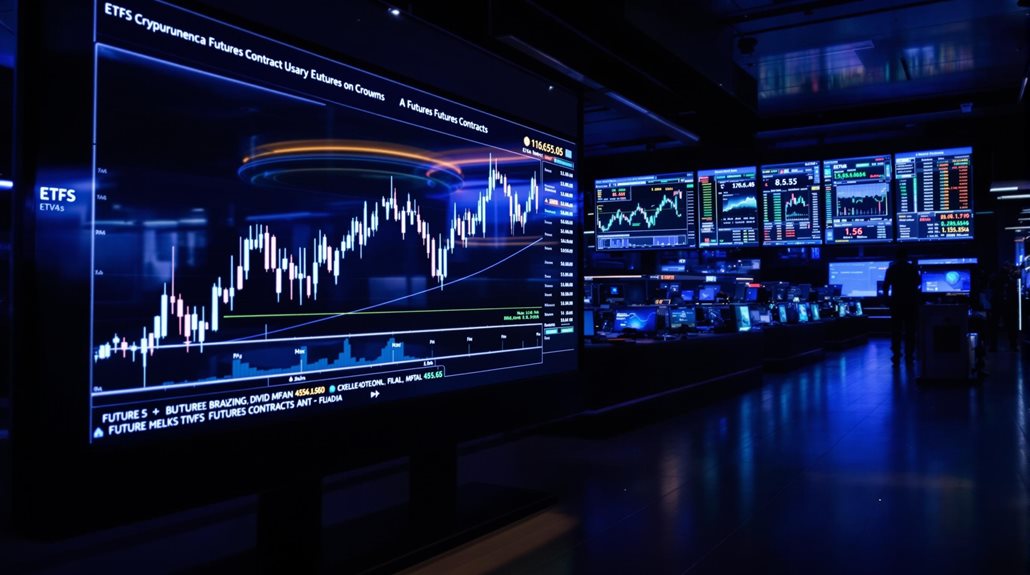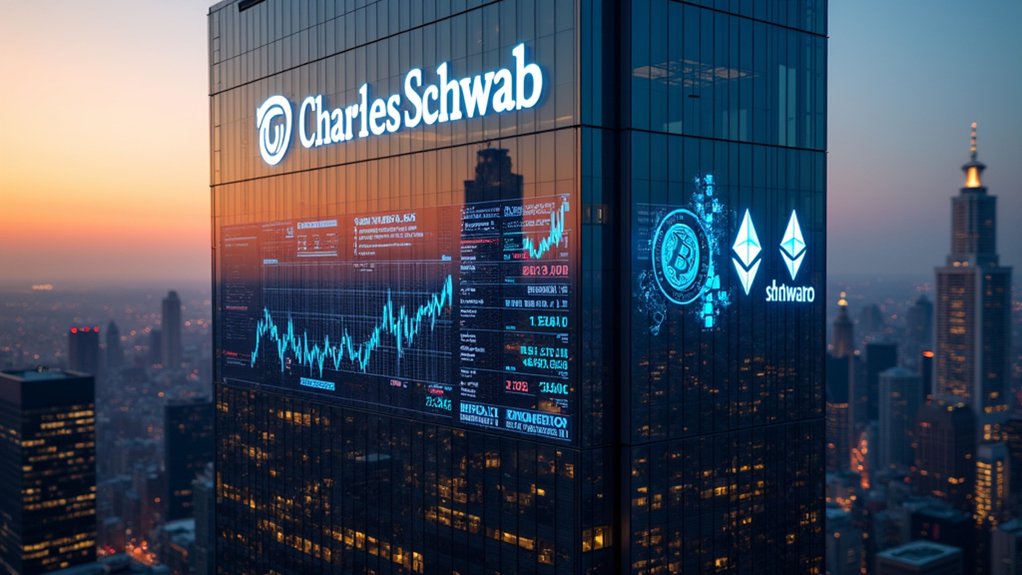Bitcoin's blockchain has grown to a massive 5450 gigabytes in 2024, expanding by about one gigabyte every few days. The size has increased dramatically from 150 GB in 2020 to 250 GB in 2022, maintaining a 36% annual growth rate since 2016. At this pace, experts predict it'll surpass one terabyte by 2030. This rapid expansion presents both challenges and opportunities for Bitcoin's future development.

The Bitcoin blockchain has grown to a massive 5450 gigabytes in 2024, making it larger than many popular video games and software programs combined. This digital ledger has been expanding steadily since Bitcoin's launch in January 2009, with its size increasing dramatically in recent years. Between 2020 and 2022 alone, it grew from 150 gigabytes to 250 gigabytes, showing just how quickly it's getting bigger. The total supply of coins in circulation is limited to 21 million bitcoins.
The blockchain's growth isn't slowing down either. It's adding nearly one gigabyte every few days, which means it's growing at about one megabyte per hour. Since 2016, when it was just 95 gigabytes, the blockchain has maintained an annual growth rate of 36%. By January 8, 2025, the blockchain had reached 613.8 GB in size. At this pace, experts predict it'll surpass one terabyte by 2030.
Running a full Bitcoin node, which means keeping a complete copy of the blockchain, now requires some serious computer hardware. Users need at least a one-terabyte solid-state drive (SSD) or NVMe drive, though two terabytes is recommended to handle future growth. Regular hard drives aren't fast enough to keep up with the blockchain's demands. A stable, high-speed internet connection is also crucial, with speeds of 100Mbps and monthly data allowances of 5-10 terabytes being sufficient. The consensus mechanisms like Proof of Work require substantial processing power to validate transactions effectively.
The blockchain's size relates directly to Bitcoin's transaction processing capacity. Currently, Bitcoin can handle between 3.3 and 7 transactions per second, with new blocks being added every 10 minutes. Each block has a size limit of one megabyte, though it can theoretically expand to four megabytes using certain technical features. During periods of high trading activity, network congestion can cause significant delays and higher transaction fees.
There's an ongoing discussion in the Bitcoin community about how to handle the blockchain's growth. Some want to increase the block size to process more transactions, while others worry this could make it harder for people to run full nodes. It's a tricky balance between making Bitcoin more scalable and keeping it decentralized and secure.
The blockchain's rapid growth has sparked debates about Bitcoin's future. While the increasing size shows Bitcoin's growing adoption, it also presents technical challenges. As the blockchain continues to expand, the community must find ways to maintain the network's accessibility while ensuring it can handle more transactions.
Despite these challenges, Bitcoin's blockchain remains a remarkable technological achievement that continues to evolve and grow.
Frequently Asked Questions
How Does Bitcoin Mining Affect the Environment?
Bitcoin mining has a significant environmental impact.
It's using as much electricity annually as Argentina, with nearly half of that power coming from coal. The mining process releases tons of CO2 – similar to Singapore's yearly emissions.
It's also using up water resources for cooling equipment and requires large land areas for mining facilities.
This heavy energy use and carbon footprint are contributing to climate change concerns.
What Happens if I Lose My Bitcoin Wallet Password?
When someone loses their Bitcoin wallet password, they can't access their digital money.
It's like being locked out of a safe without a key. There's no "forgot password" button like regular websites. The funds remain stuck in the wallet unless the owner can remember or recover the password.
While there are password recovery services available, there's no guarantee they'll work. That's why Bitcoin users need to be extra careful with their passwords.
Can Governments Regulate or Ban Bitcoin Transactions?
While governments can try to regulate Bitcoin through laws and restrictions, it's very difficult to completely ban or control.
Bitcoin's decentralized network operates across borders without a central authority. Countries can restrict local crypto exchanges or make Bitcoin illegal, but people can still access it through peer-to-peer trading, VPNs, or overseas platforms.
Some nations, like El Salvador, have taken the opposite approach by making Bitcoin legal tender.
Why Does Bitcoin's Price Fluctuate so Much?
Bitcoin's price swings wildly due to several key factors.
Supply and demand play a big role – there's a fixed supply of bitcoins, so prices jump when lots of people want to buy.
Market sentiment and news also cause big moves, like when countries announce new crypto rules.
The market is mostly made up of individual traders rather than big institutions, which can lead to sharp price changes when many people buy or sell at once.
How Secure Is Bitcoin Against Quantum Computing Attacks?
Bitcoin's current security measures could be at risk from future quantum computers.
While today's quantum computers aren't advanced enough to break Bitcoin's encryption, experts worry this might change.
About 25% of all mined Bitcoin might be vulnerable to quantum attacks.
However, the crypto community isn't sitting idle – they're working on quantum-resistant solutions like new encryption methods and signature systems to keep Bitcoin secure against these potential threats.





